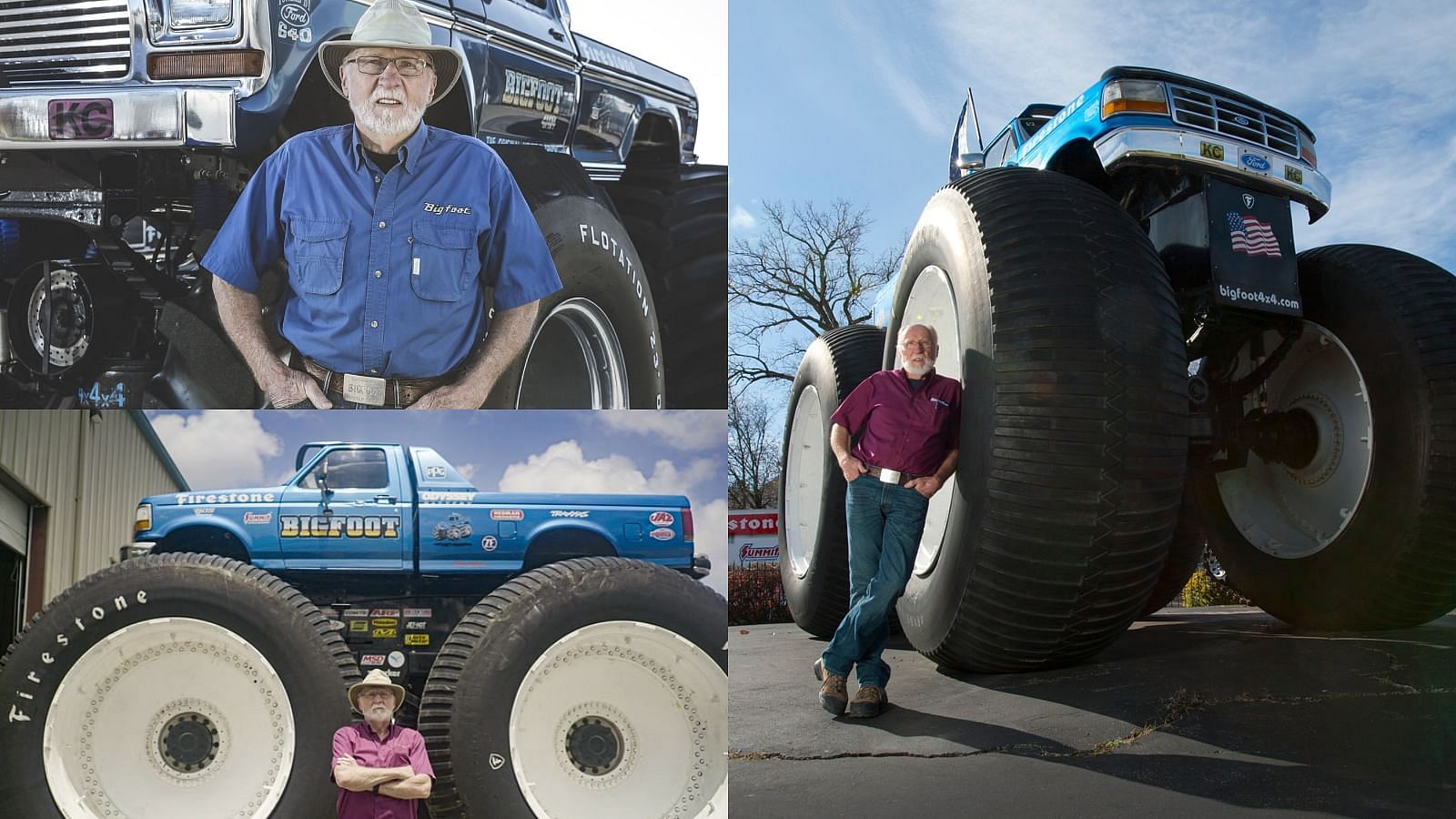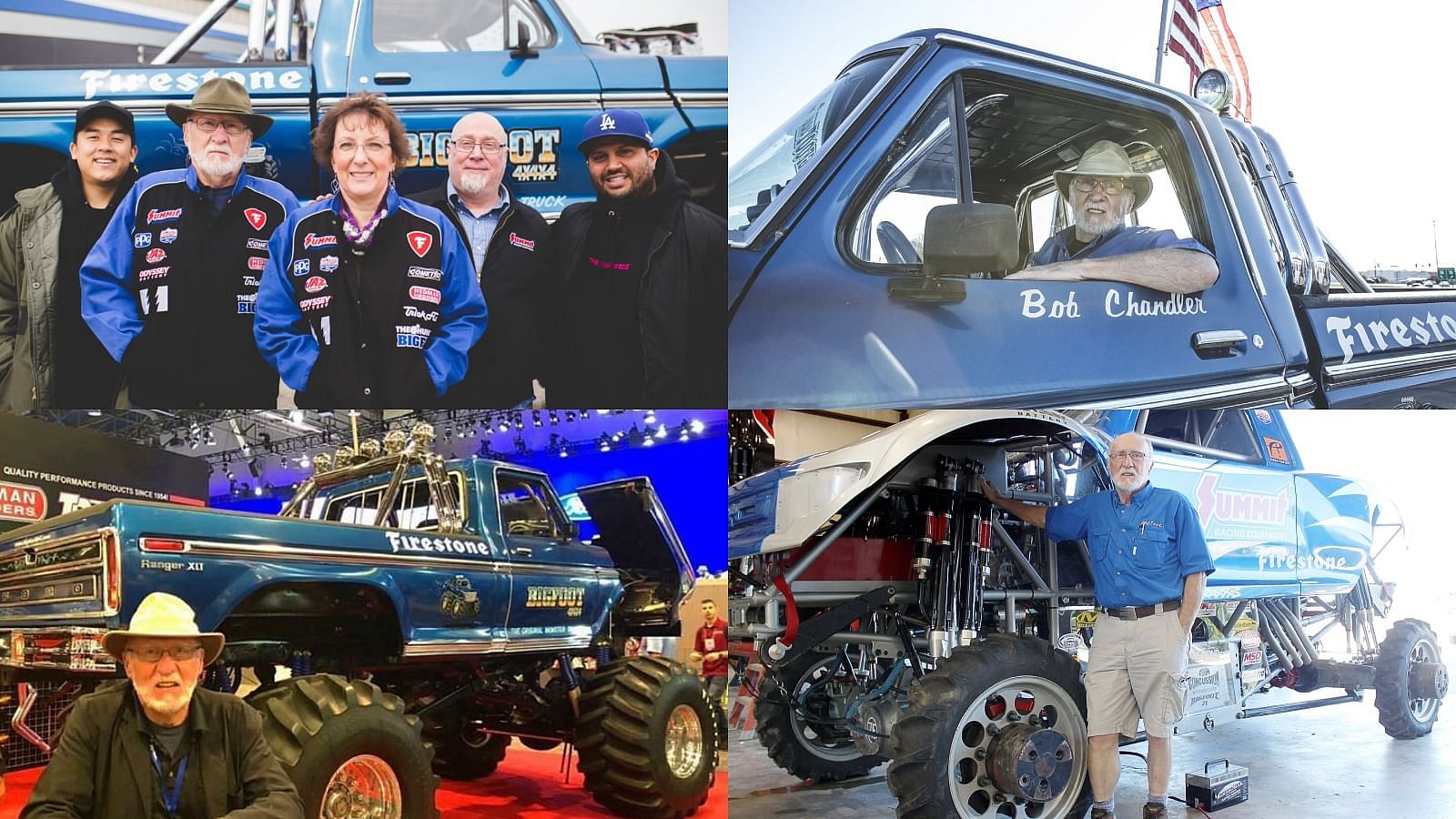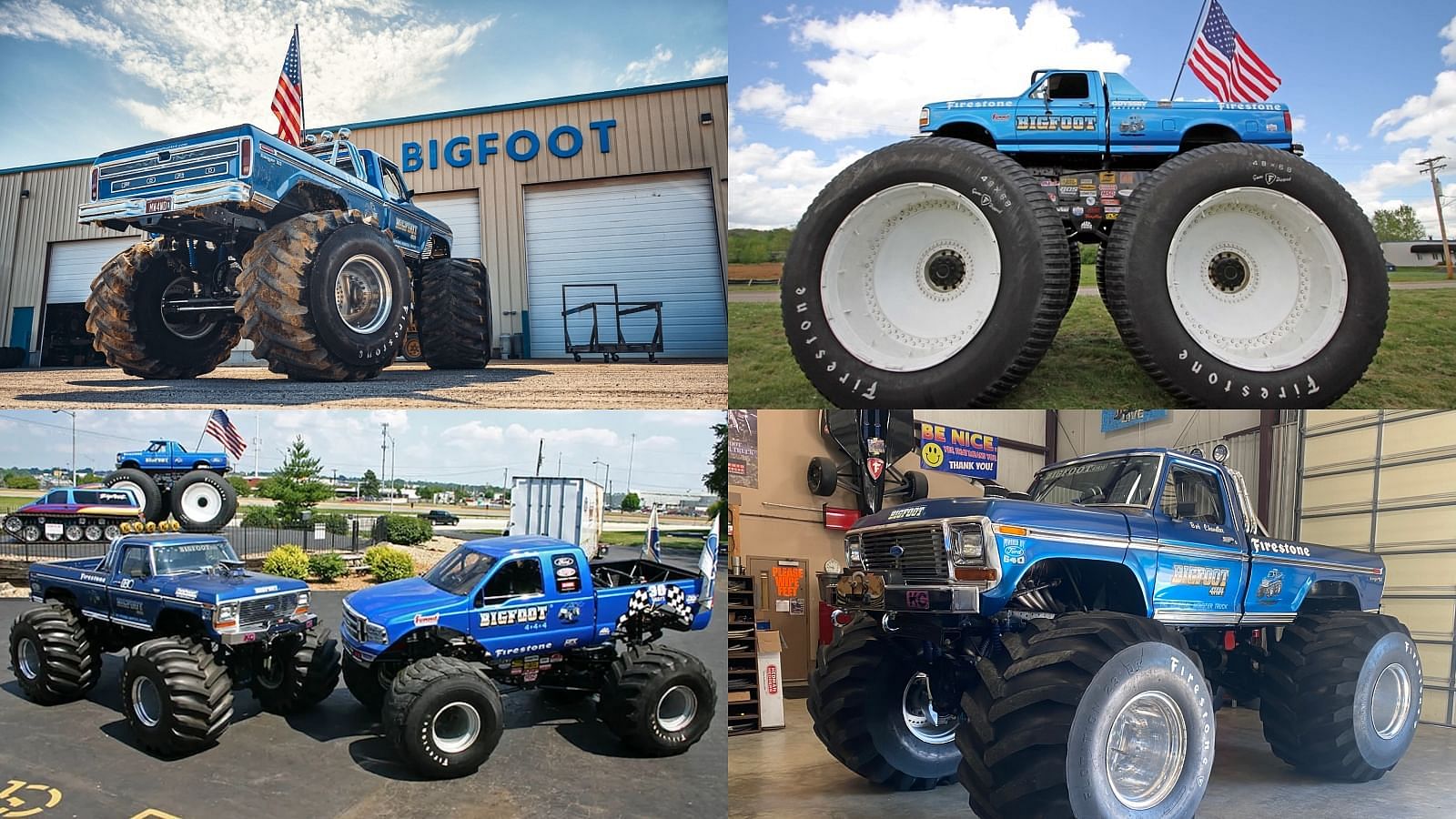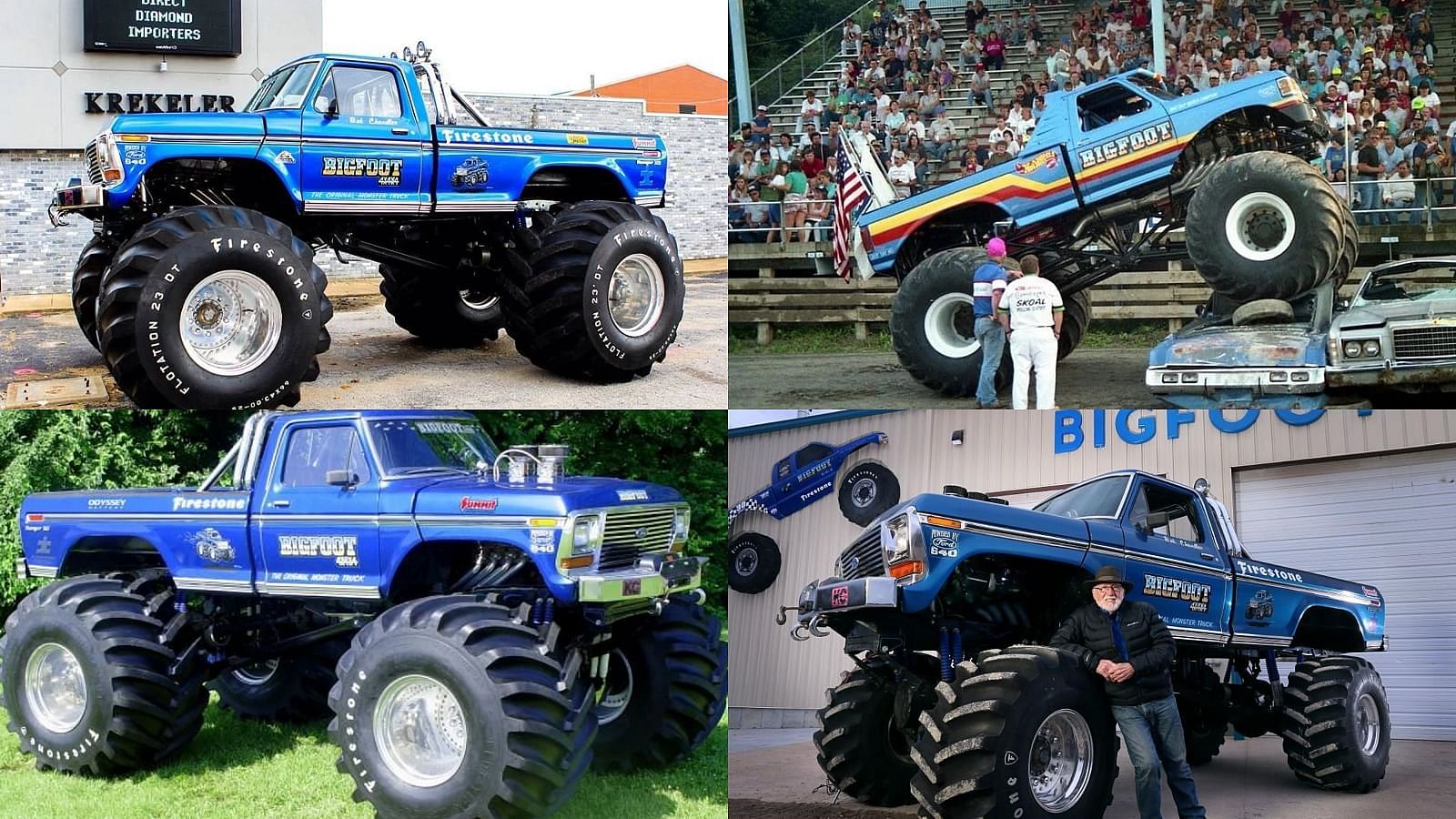How Bob Chandler's Bigfoot Monster Truck Revolutionized Motorsports
Bob Chandler's original Bigfoot monster truck laid the foundation for the exhilarating world of monster truck racing. This comprehensive article explores the fascinating history behind this iconic vehicle, from its humble beginnings as a modified 1974 Ford truck to becoming an internationally recognized motorsports sensation.
Published March 19, 2024

The original Bigfoot monster truck revolutionized the world of motorsports and laid the foundation for the exhilarating spectacle of monster truck racing by stunning crowds as the first monster truck to publicly crush cars. Through relentless dedication and constant innovation, Bigfoot evolved over decades into an internationally recognized icon that inspired modern competition trucks.
In this comprehensive article, we take a deep dive into the fascinating history of the original Bigfoot monster truck—a groundbreaking creation that laid the very foundation for the exhilarating world of monster truck racing. Join us as we explore the incredible journey of Bob Chandler, an extraordinary individual whose unwavering vision and sheer determination gave birth to an icon that continues to capture the hearts of fans and enthusiasts worldwide.
Bob Chandler: The Unsung Hero of Motorsports

Bob Chandler, a name deserving of more recognition in the world of motorsports, pioneered the monster truck industry with his creation, the Original Bigfoot Monster Truck. Hailing from St. Louis, Missouri, Chandler transitioned from a construction manager to an off-roading enthusiast. Frustrated by the lack of off-roading resources in his area, he, along with his wife Marilyn and neighbor Jim Kramer, established Midwest Four Wheel Drive in 1975.
Chandler's adaptability shone through as he introduced military axles and 48-inch tires, setting industry standards. His dedication to safety culminated in co-founding the Monster Truck Racing Association (MTRA) in 1987. Beyond monster trucks, Chandler enjoyed a lengthy broadcasting career with the San Diego Padres and authored "Bob Chandler's Tales from the San Diego," sharing his baseball experiences. His influence extends beyond his city, making him a respected figure not just in San Diego but in the world of motorsports, leaving an indelible mark of Bigfoot on Monster Truck history.
A Twist of Fate: The Birth of the Original Monster Truck

Initially, Chandler's aspirations were centered around starting a family with his wife, Marilyn, and pursuing a stable career in construction. However, a life-altering motorcycle accident in 1973 shattered those plans. It was during this challenging period that Chandler acquired a 1974 Ford F250 truck and, with the assistance of his neighbor and close friend Jim Kramer, embarked on a transformative journey that would forever change the landscape of monster truck racing.
The Phenomenon Unveiled: The Original Bigfoot Monster Truck
The result of Chandler's relentless dedication was the inception of the original monster truck. This colossal vehicle stood at an impressive 15 feet 6 inches in height and weighed a substantial 28,000 lbs. (or 38,000 lbs. with duals). Its width measured 13 feet 1 inch (or 20 feet 5 inches with duals), and it rode on massive 120 x 48 x 68 Firestone tires.
The engine was a powerhouse, matched with a military axle. The original Bigfoot's instant fame paved the way for other trucks bearing the iconic "Bigfoot" name, leaving an indelible mark on the world of monster trucks.
Notably, the original Bigfoot possessed unique features that set it apart from its colossal descendants. While it boasted substantial lift and a heavily tuned engine, it did not possess the modern Monster Jam chassis we recognize today. That distinction would later be claimed by Bigfoot Three and Four, marking their entry into the competitive monster truck circuit, eventually becoming synonymous with Monster Jam.
A Trailblazer in Local Off-Roading

Bigfoot 1's initial foray was into local off-roading events and the occasional tractor-pulling contest. However, its breakthrough came in 1981 when it became the first monster truck to crush cars in front of a sizable audience. This momentous feat was witnessed by over 70,000 paid attendees at the Pontiac Silverdome in Michigan, solidifying Bigfoot's place in monster truck history.
Chandler's modifications to the Bigfoot included larger tires, a robust suspension, and innovative four-wheel steering. By 1981, Bigfoot made history by being the first to crush cars, setting the stage for a new era. In August 1983, the inaugural side-by-side monster truck race featured Bigfoot and USA-1.
This milestone set the stage for a significant partnership with Ford Motor Company in 1983, a collaboration that would span nearly 25 years. In 1985, established promoters like USHRA and TNT Motorsports began hosting regular monster truck races. The inception of the purpose-built "Stage II" monster truck, Bigfoot 4, marked a significant milestone, featuring a fabricated heavy-duty frame and planetary-equipped axles. Today, monster trucks have evolved into purpose-built vehicles with tube-frame chassis and fiberglass bodies, showcasing their enduring legacy of power and innovation.
Tracing the Evolution of Bigfoot

Bigfoot, born from a 1974 Ford F-250, has been a pioneer in the monster truck realm for over four decades. Crafted by Bob Chandler in 1975, this behemoth laid the very foundation of the industry. By 1981, it had already become iconic as the first monster truck to publicly crush cars, captivating audiences.
Ford Motor Company joined the journey in 1983, nurturing Bigfoot's growth for almost 25 years. The game-changer arrived in 1989 with Bigfoot Mark 8, featuring a revolutionary tubular steel chassis and cantilever suspension, clinching the 1990 World Championship. Innovations continued in 1991 with Bigfoot 4's 3-D concept body, while 1998 introduced Bigfoot Mark 16 with a 2-speed Powerglide transmission, boosting performance.
Bigfoot Mark 20's shift to a battery-powered system in 2012 marked an eco-conscious milestone. Today, the legacy lives on with the impending releases of Bigfoot Mark 22 and Mark 23—a testament to its enduring legacy and unwavering commitment to progress.
The Genesis of Monster Jam: A World-Altering Influence
It is impossible to understate the influence of the original Bigfoot on the world of monster truck racing. Without Bigfoot, there might never have been the iconic Grave Digger, Maximum Destruction, or any of the beloved trucks that have captured the hearts of fans across the globe. Bob Chandler's unwavering commitment to safety led to the founding of the Monster Truck Racing Association (MTRA) in 1987, further cementing Bigfoot's legacy.
The monster truck's fame soared with the debut of Monster Jam on national TV in 1992, especially for Bigfoot 10. In 2002, Bigfoot 5 made history by earning the Guinness World Records title of "world's tallest, widest, and heaviest monster truck." A pivotal moment arrived in 2007 with Bigfoot 16, introducing remarkable innovations with a 2-speed Powerglide transmission.
While other trucks may boast more championship trophies and garner more media attention, it is crucial to acknowledge that the remarkable journey of Bob Chandler, a true Missouri gentleman, paved the way for the evolution of competitive Monster Jam trucks into the awe-inspiring spectacles they are today.
Cultural Significance: A Global Icon
Bigfoot, the legendary monster truck, has left its tire tracks in various forms of media, from films to television shows and cartoons. Notably, the children's program "Bigfoot Presents: Meteor and the Mighty Monster Trucks" pays homage to the iconic Bigfoot monster truck. Another cartoon titled "Bigfoot and the Muscle Machines," dating back to the mid-1980s, eventually spawned a feature film.
Beyond the borders, Bigfoot has ventured into over 23 countries, earning international acclaim as a cultural icon. Its contributions to the monster truck industry are undeniable, with innovations like the industry-standard 66-inch by 43-inch by 25-inch terra tires, first pioneered by Bigfoot Mark 2.
Moreover, Ford Motor Company's sponsorship in 1983 underscored its industry influence. Recognized and celebrated, Bigfoot participates in a staggering 600-1200 events annually, maintaining its status as an enduring monster truck sensation.
Write a comment
Comments
No Comments Yet








